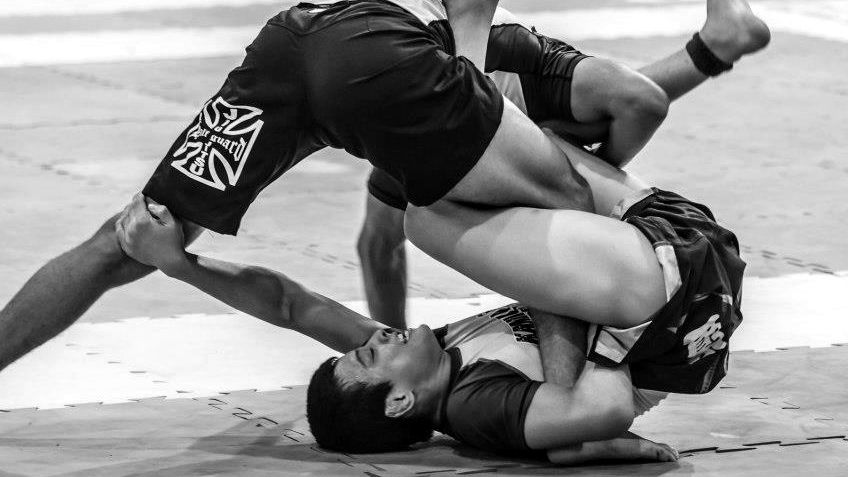Guest post by Evolve MMA, Asia’s premier championship brand for martial arts. It has the most number of World Champions on the planet. Named as the #1 ranked martial arts organization in Asia by CNN, Yahoo! Sports, FOX Sports, Evolve MMA is the top rated BJJ gym in Singapore.
The Berimbolo is a Brazilian Jiu-Jitsu (BJJ) technique that involves inverting one’s body to obtain a dominant position over an opponent. Although the origin of the technique is uncertain (some attribute it to Marcel Ferreira, while others claim it is the invention of Samuel Braga), it has been used effectively at the highest levels of BJJ competition by competitors such as the famous Miyao brothers.
How does the Berimbolo work?
The Berimbolo is initiated from the De La Riva guard, where the bottom player works to disrupt the balance of his or her opponent. When the top player loses balance and sits on the mat, the bottom player spins upside down and either takes the top player’s back, obtains full mount, or gains some other advantageous position. The effectiveness of this technique has caused it to surge in popularity since it emerged on the BJJ competition scene in the 2000s.
How to do the Berimbolo
1) Establish De La Riva Guard – Most Berimbolo attacks begin from the De La Riva guard. There are a number of ways to enter the De La Riva guard, including entries from standing and sitting. However, regardless of the entry used, the De La Riva guard is established as follows:
- Control your opponent’s right ankle with your left hand (this and the following steps assume that your opponent’s right leg is forward)
- Place your left leg around the outside of your opponent’s right thigh
- Insert your left foot between your opponent’s legs
- Control your opponent’s lapel, belt, left sleeve, or right sleeve with your free hand.
2) Force your opponent to sit on the mat – There are a number of ways to get your opponent to sit on the mat. One effective way to do this is to obtain a slight angle on your opponent and push his or her waist with your free leg. This should force your opponent to sit down on the mat and allow you to initiate the Berimbolo.
However, it should be noted that this step is unnecessary in a double guard pull situation. When you and your opponent pull guard at the same time, simply establish the De La Riva guard from the seated position and move forward with the technique.
3) Invert – Many people are reluctant to attempt the Berimbolo due to the inversion required to complete the technique. However, with a little practice, just about anyone should be able to successfully invert. A great way to practice the inversion required for the Berimbolo is by drilling wall spins. Wall spins will get you comfortable with the movement while improving your speed and fluidity.
Once you’ve established your De La Riva hook and have successfully forced your opponent to the mat, obtain a grip on your opponent’s belt. With your grips established, invert in the direction of your opponent, stopping halfway. At this point, you should have a grip on your opponent’s ankle, a grip on your opponent’s belt, one leg under your opponent’s right leg, and one leg across your opponent’s waist.
4) Finish the technique – After completing the above steps, there are a number of ways to finish the technique. The most common, however, involves taking the opponent’s back. In order to take your opponent’s back following a successful inversion, do the following:
- Switch the hand gripping your opponent’s ankle to his other leg.
- Kick your legs towards the floor, forcing your opponent to expose his or her back.
- Pull your opponent’s leg against your top leg, temporarily immobilizing it.
- Reach for the top of your opponent’s rear collar, and climb up his or her back.
- Establish a seat belt grip.
- Establish the back mount by hooking your top leg around your opponent’s waist.

















